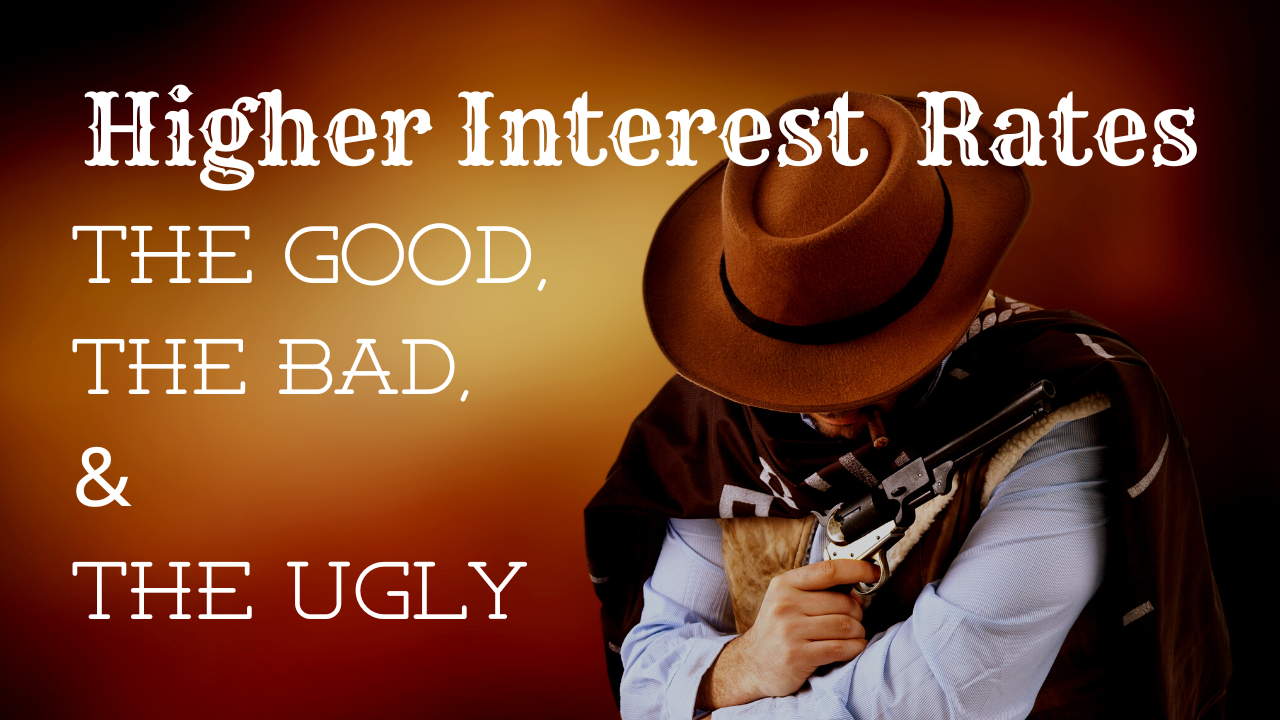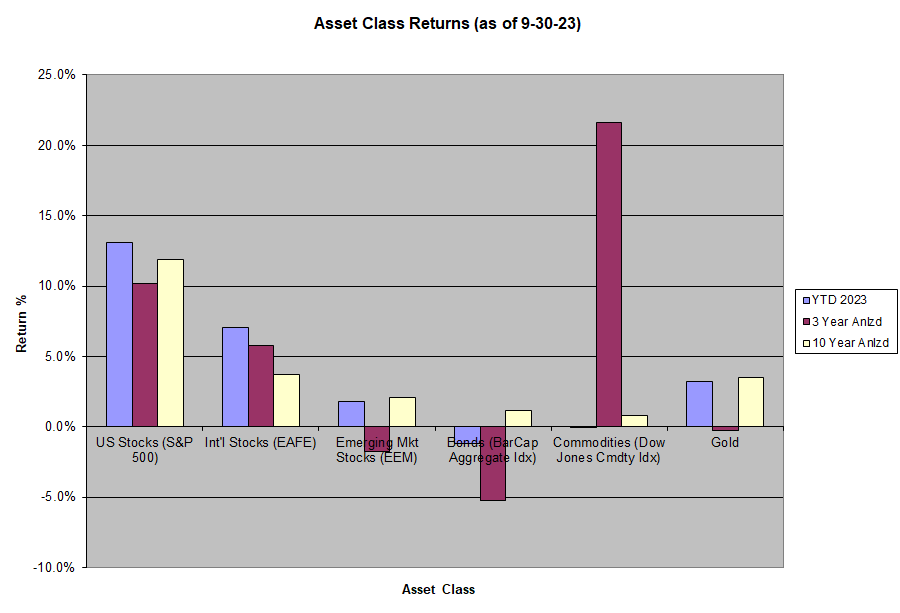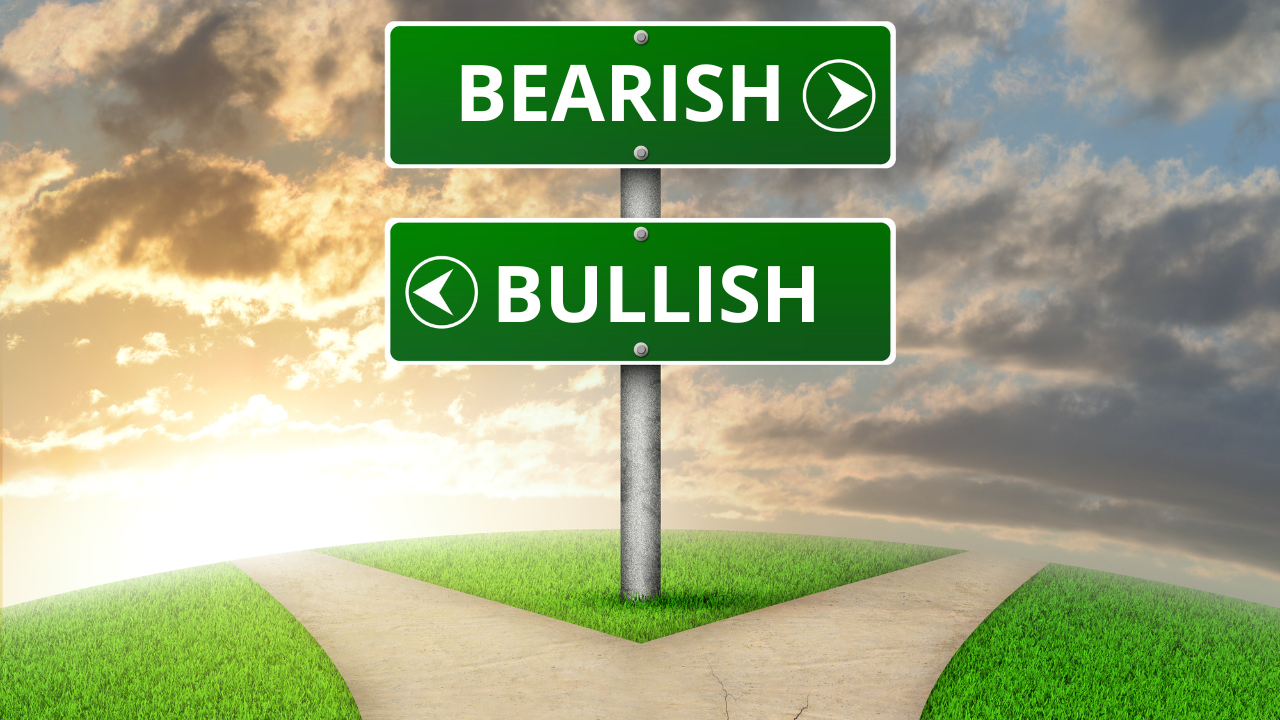Perhaps the most important economic and market driver over the last few years has been the Federal Reserve’s (“Fed”) aggressive inflation battle marked by a sharp rise in interest rates. Since 2021 the Fed has raised rates 11 times totaling 5.25% – a pace not seen since Federal Reserve Chair Paul Volcker’s inflation battle of the early 1980s. The rapid rise in interest rates across the rate spectrum has been disconcerting, as funding costs for home owners, and borrowers of all kinds have increased significantly.
While the immediate reaction to higher interest rates is often apprehension, it is essential to explore the broader perspective, understanding that while higher rates may be challenging for borrowers, they also provide a myriad of benefits to savers and investors.
How We Got Here
Exhibit A
Exhibit A shows the history of the 10 year treasury yield, and related real yield (the real yield is the bond yield minus inflation). Note two distinct long-term rate cycles. The first rising rate regime occurred from the post-World War II period through 1981. This regime ended with a crescendo of rates topping 15% as Fed Chairman Paul Volcker finally broke the persistent inflation that lasted through much of the 1970s. The second rate cycle lasting from 1981 through 2020 was defined by mostly moderate inflation, and declining interest rates. The period following the great financial crisis (GFC) in 2008/09 through the height of the Covid pandemic might best be characterized as crisis era monetary policy. This equates to a zero interest rate policy and additional monetary stimulus to increase the domestic money supply in order to spur economic activity.
Exhibit B
Exhibit B shows the Fed Funds rate since 1999. The rate follows an expected path in the 2000’s of textbook countercyclical policy. At the peak of the internet bubble in 1999, when the economy was booming fed funds toped 6%. As the economy faltered in 2000-2002 the fed lowered rates to help support the economy, then started raising rates as the economy began to recover in 2003. But following the financial crisis in 2008/09 the Fed dropped the rate to near zero, and stayed there for almost 7 years. In 2015 the fed began to raise rates, but following a stock market decline in late 2018, the Fed famously pivoted and began a short cycle of rate cuts. Then Covid happened.
The Covid pandemic marked a return of zero interest rate policies and another massive round of almost-free money. The ultimate result, was higher inflation and much higher interest rates. To be fair, there were few good options for monetary policy during a worldwide economic shutdown. It is impossible to know what the alternative outcome would have been if monetary and fiscal pandemic policy had taken a less “generous” approach to supporting the economy. One real possibility could have been a deflationary depression. This outcome would likely have been much worse for citizens and the economy at large, as compared to the challenges wrought by inflation.
Regardless of how we got here, we are now living in a world of much higher rates. The good news is that we have been here before, and higher rates don’t have to result in bad economic outcomes. Below we highlight the good, the bad and the potentially ugly consequences of higher interest rates.
Higher Rates – the “Good”
1. Rewards for Savers and Fixed Income Investors: Higher interest rates directly translate to better yields on savings accounts, money market funds, and other fixed-income investments. For those seeking stable returns without the volatility of equities, this environment can be much more rewarding. This is especially important for retirees and those on fixed incomes. A return from zero interest rates to a more “normal” interest rate environment should be welcomed.
2. A More Discerning Stock Equity Market: Higher borrowing costs can separate the wheat from the chaff, ensuring only companies with robust financial health and efficient operations can thrive. This environment often leads to a market where quality companies stand out, providing clearer investment choices.
3. Reallocation of Capital: As certain over-leveraged sectors contract, capital gets redirected towards more efficient and productive sectors of the economy. The opposite of this may occur during a zero-rate environment, where persistently low rates allow companies that would otherwise go out of business (due to inefficiency or being uncompetitive) to survive by refinancing their debt at lower rates. Firms that rely on a fresh supply of almost-free money to stay in business can ultimately hurt the economy by crowding out more efficient businesses.
4. Tempering Speculative Excess: All speculation is not bad. For example, speculative capital may be used to fund risky endeavors that may result in groundbreaking technological advances. But unfettered speculation, whereby all investors become gamblers generally ends in bubble like conditions with severe negative economic consequences. Higher interest rates help to temper speculative excess as investors are offered a risk-free rate of return. Conversely, a zero-rate environment can lead to excessive, even reckless speculation.
5. Protection for Future Downturns: By keeping interest rates at a moderate level when the economy is doing well, policymakers can then have room to reduce them in the event of an economic downturn, thereby providing monetary stimulus when it’s most needed.
6. Inflation Protection: Higher rates often serve as an effective tool to combat inflation. While rising prices can erode real returns, the proactive stance of central banks in raising rates can help protect the purchasing power of our investments in the long run.
7. A Healthier Economic Balance: Higher rates can prevent the economy from overheating, ensuring that growth is sustainable and not driven by excessive borrowing. A balanced economy is invariably more resilient, and that bodes well for long-term investments.
Higher Rates – The “Bad”
1. Reduced Consumer Spending: As borrowing becomes more expensive and interest on existing debt rises, consumers might cut back on expenditures. This can particularly affect sectors like housing, where mortgage rates directly influence buying decisions. Consumption represents approximately 70% of the US economy, so ultimately higher rates may impact demand and slow economic growth. It is important to note that this is a primary objective of the Fed’s inflation fight.
2. Potential for Reduced Investment: Companies might delay or scale back capital projects because of the increased cost of financing, which can hinder productivity and expansion in the long run.
3. Strain on Debtors: Both individual and corporate borrowers with variable-rate debts will experience increased costs, potentially leading to financial strain or default.
4. Housing Market Slowdown: Higher interest rates typically lead to higher mortgage rates, making home purchases more expensive. This can lead to reduced demand, falling home prices, and potentially a broader housing market slowdown.
5. Stock Market Volatility: Higher interest rates can result in lower corporate profits (due to higher borrowing costs) and make bonds relatively more attractive compared to equities. This can lead to sell-offs in the stock market.
6. Decreased Valuation of Current Bonds: When interest rates rise, the prices of existing bonds (which have lower rates) typically drop. This can lead to capital losses for bondholders. The failure of Silicon Valley bank in March highlighted this risk, as the bank had invested a large portion of its assets in a longer-dated bonds that had declined along with the rising rate environment. This led to losses in their bond portfolio and ultimately insolvency as their large corporate depositor base fled.
Higher Rates – The “Ugly”
The “Ugly” outcome from higher rates would be some perfect storm of the “bad” list above. This would be akin to a debt crisis on par with the 2008 financial crises, or the 1930’s Great Depression. Higher interest rates coinciding with a larger Federal deficit would result in increased funding costs for the US Government which would exacerbate the budget deficit and lead to an even faster accumulation of debt. A recession may ensue as the government would need to reduce spending and increase taxes, which would further exacerbate a recession. The nightmare would go into over-drive if creditors lost confidence in the U.S.’s ability to service its debt, leading to some ugly mix of capital flight, currency depreciation and severe economic contraction.
While this scenario is scary, it is far from a likely outcome. Inflation and the ability for the Federal Reserve to contain it remain key to the ability to normalize rates. There is good news on this front, as the trajectory of inflation remains lower. Note that the current treasury rate of 4.58% as of 9/30 is less than the long-term average since 1958. While the yield has risen from less than 1% during the Covid lows to approximately 4.7%, the economy at large has so far absorbed the higher rate environment without significant collateral damage.
Year-to-Date Review and Q4 Outlook
Year-to-date through 9/30/23:
- Domestic stocks (S&P 500) increased 13.1%
- Developed international stocks (EAFE) increased 7.1%
- Emerging market stocks (MSCI EM) increased 1.8%
- Bonds (Bar Cap Aggregate) declined -1.2%
- Commodities (DJCI) were flat
- Gold was up 3.2%
We have updated our asset class return chart to reflect year-to-date 2023 along with three- and ten-year annualized returns for the aforementioned asset classes.
After a very bad year for the S&P 500 in 2022 (-18%+), the index has recovered nicely this year. But most of this has been driven by a small number of highly valued stocks. The S&P 500 weights companies by size, so the largest companies carry the biggest weight in the index and therefore account for a large portion of the index returns in any given year – for better or worse. The S&P 500 Equal Weight ETF (RSP) which, as the name suggests, weights all 500 stocks in the index equally in the calculation of the index value, had returned a scant .31% year-to-date through 9/30/23. Small and mid-sized stocks returned -.33% and 3.1% respectively over this time frame.
Periods of narrow market participation are not unusual, and long-term exposure to a size weighted index like the S&P 500, by definition, will provide investors with market like returns (less fees). However time is a key component to achieving these returns. The S&P 500 generated negative annualized total returns of -.9% per year for the 10-year period ending 2009. That was the famed “lost decade” for stocks. According to data from Renaissance research, over this same time frame the S&P equal weight, S&P Small-Cap and S&P Mid-Cap indices provided positive annualized returns of 5.1%, 6.4% and 6.3% respectively. Knowing exactly what stock, sector or asset-class will “out-perform” over any given time frame is extremely difficult, but history suggests that a prudent level of diversification is a sound strategy for both managing risk and achieving reasonable returns.
Looking forward, risks to the market and economy remain ever-present. Geopolitical turmoil, a looming U.S. election year, concerns about fiscal deficits and higher interest rates, and the potential for a recession are all factors that are informing investment decision making. But against this back-drop it is important to remember that there remain good reasons to be bullish. The economy has not slid into a broad-based recession as many economists had expected and has remained resilient. Additionally, unemployment remains at extremely low levels with analyst expectations for S&P revenues and earnings at a new record high, while the inflation trend remains solidly down.
In summary, we view risk and reward as appropriately balanced, and do not consider this a time to take either excessive risk or an abundance of caution in investment allocations. This is evidenced by most client portfolio stock allocations invested at or near their long-term allocation targets. Within stocks we continue to favor U.S. holdings over International, and where appropriate, continue to invest in smaller and mid-sized companies which we think are attractively priced at current levels. Within bonds, the ongoing sell-off in these securities has improved yields significantly over the last two years. We continue to favor shorter maturity investment grade holdings of both government and corporate debt. The higher quality nature of these investments adds a layer of protection in the event that a recession does take hold in 2024.*
Should you have any questions regarding your investment account(s) and personal financial plans, or if there have been any recent changes to your investment and/or retirement objectives, please do not hesitate to contact our office. We can also provide you with a current copy of our SEC Form ADV Part 2, at your request. As always, we thank you for entrusting AMM to help you achieve your investment and retirement objectives.
Your Portfolio Management & Financial Planning Team






